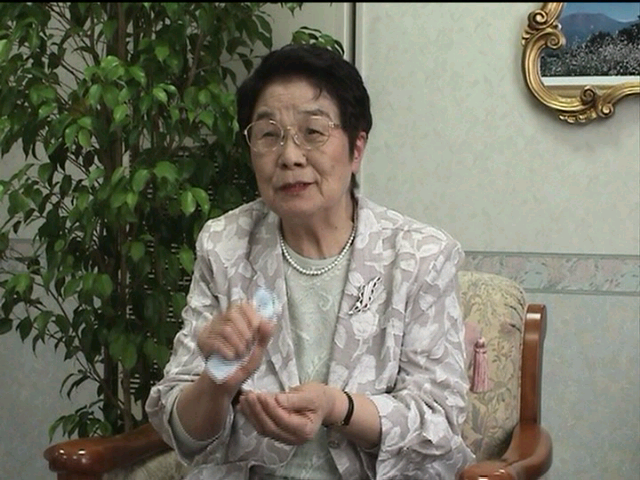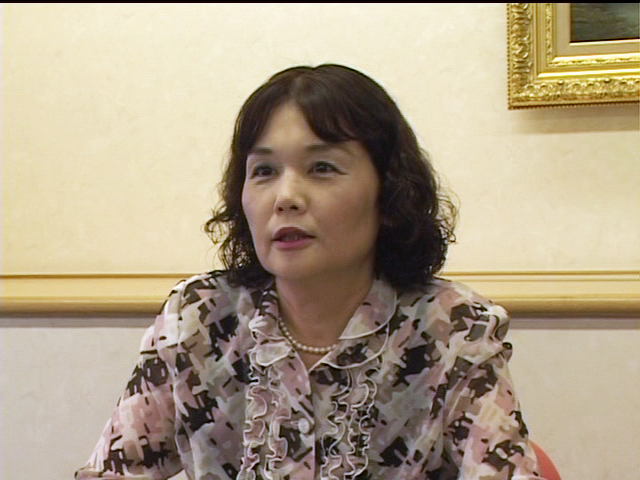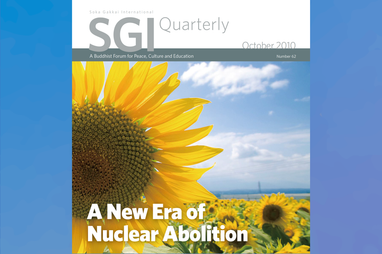SGI Quarterly
A 12.5-kiloton atomic bomb detonated in the air over Hiroshima on August 6, 1945. There were over 100,000 deaths in a population of about 250,000. Three days later, on August 9, 1945, a 21-kiloton atomic bomb detonated over Nagasaki causing around 75,000 deaths and 75,000 injuries. Women from Hiroshima and Nagasaki were recently invited by the Soka Gakkai Women’s Peace Committee to talk about the reality of living as a hibakusha, or A-bomb survivor. Here are extracts from the interviews:
Hiroshima

Pok Soon Kwak is a second-generation Korean living in Japan. She was just 16 years old at the time of the A-bombing and witnessed the horrors.
“Hiroshima is a city with many rivers. Army workers on rafts were using something like a rake made of green bamboo to pull floating corpses out of the river on to wooden boards. Four men shouldered the bodies and brought them up out of the river. They made some space in a burned-out site. Corpses were placed in line. Oil was sprinkled over them. Then the bodies were set alight. The remains from each body, just a small pile of ashes no bigger than one’s palm, were placed on a small roof tile. On the tile, descriptions of the deceased’s gender, estimated age, approximate height and so forth were written. The remains placed on roof tiles were then arranged in rows. Those searching for their families went there to search the remains, but all they could find were piles of ashes because the bodies had been burned. There was no way they could identify their relatives from the ashes.
“In my case, the following month, I started to bleed. It was something like a period, but it didn’t stop. It continued for over 30 to 40 days. After stopping for five days, it began again. This continued for three to four months. On top of that I started to feel pain in my bones. I was always saying, ‘My bones hurt!’”

Kikue Shiota was 21 years old at the time of the bombing. She lived 2 km from the A-bomb center. Her 14-year-old sister was killed, and her 10-year-old brother died.
“I tried to understand why this happened to me. On behalf of thousands of A-bomb victims of Hiroshima and Nagasaki, I wondered what I could do as a survivor. I came to realize the nuclear devastation I had first-hand experience of and the folly of human beings killing each other must never be repeated. I realized that it was my mission to convey this message to the world, and I think that is why I have survived until now.”

Lanterns float down the Motoyasu River in Hiroshima [Photo credit: © Jodi Cobb/Getty Images]
Nagasaki

Kazumi Niwa is engaged in an effort to make people aware of the terror of nuclear weapons, which can exert harmful effects, generation after generation.
“As a 17-year-old, I heard that my mother was a hibakusha. I was enraged and hated my family. After marriage, finally I became pregnant with a healthy baby boy. He had weak hip joints like me. Then I became pregnant with my second son, and I was in the hospital during my pregnancy. My grandchildren are hibakusha. On September 27, 1984, there was a peace conference for women against war, held at the Kyoto International Conference Center, attended by women from 27 countries. I spoke to representatives from around the world. Even though I was born a second-generation hibakusha, I no longer feel that is a stigma because I believe it has given me a mission to convey to the world, through my experience and my life, the suffering the A-bomb has caused us.”

Sueko Takada was six years old at the time of the bombing. She was exposed to the A-bomb in her home in Hirabayashi-cho, 3.5 km from the hypocenter. For 60 years since then, she has battled with numerous potentially fatal diseases and health problems.
“When I was around 22, we discussed how we could do something for peace. We formed a paper crane group. Folding paper cranes is a Japanese tradition, a symbolic gesture, a way in which people wish for good health. We proposed to build a statue of a girl holding an origami-style crane and to have it in the Peace Park. We also collected signatures. We brought the petition to the prefectural office, and we had a peace fountain built in Nagasaki . . . Since I was exposed to the bomb, my life has been a living hell. I don’t want anyone else to experience such a hell.”
View "Testimonies of Hiroshima and Nagasaki" in the original Japanese (with subtitles in several languages or dubbed in English.


